The Civics of a Just Transition
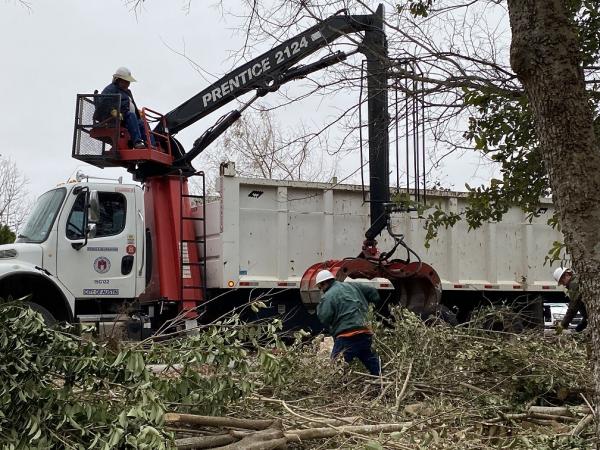
The Broader Civics of Placemaking in the Current Era
In discourses about the civics of placemaking, work—the concrete processes of labor involved in making places and the goods and services that support urban life—seems to often get short shrift. The design dimensions of places and the ways in which the built environment promotes social interaction and qualities of life for residents are commonly foregrounded. Yet, work and the environment in its broader sense must be integrated in a more robust and meaningful concept of placemaking in the current era.
A key dimension of civic placemaking in the twenty-first century is the profound need to dramatically reduce the environmental harms associated with urban life in all of its dimensions. At the same time, the way that we produce and live in spaces must now confront the stark history and current realities of growing inequality, segregation, and racial and ethnic discrimination that shape the experiences of urban life in the United States.
Pulling together these particular elements of placemaking was the goal of a research program led by Miriam Solis, Michael Oden, and Katherine Lieberknecht of the Community and Regional Planning Program. In partnership with the City of Austin, this team has produced a number of publications under the rubric of Expanding Pathways to Quality Jobs in Austin’s Growing Green Economy.
The broad normative framework animating our investigation integrated sustainable placemaking with the drive to expand climate justice in the context of social and environmental crises. Sustainable placemaking demands that all new economic and physical development generate net improvement in environmental performance while producing more equitable outcomes for workers and residents. Such a “just transition” to a greener, low-carbon city is consonant with sustainable development, but emphasizes specifics. The just transition framework focuses on ways that green policies can benefit lower-income households through reduced exposure to environmental harms, lower household costs, and improved access to quality jobs. Our research on the green economy at the national level, and at the local level in Austin, is grounded in these propositions.
Economy and Work in the Era of Climate Change and Growing Inequality
Given inconsistent and incomplete policy at the national and state level, US cities have been leading efforts to mitigate climate change. The City of Austin is often viewed as a leader on a range of environmental issues. With active citizen support, policies implemented by City of Austin enterprises and departments have yielded significant progress in reducing per-capita greenhouse gas emissions and water consumption. However, the actions of individual cities have a minimal impact on global climate dynamics in the absence of aggressive national and international interventions.
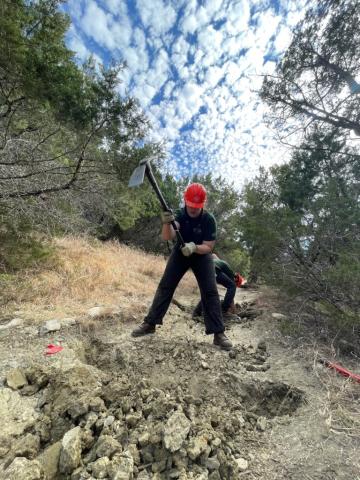
In the US, there has been a damaging pattern of wavering commitment to aggressive climate action and investment in green technologies and industries. Between 2009 and 2012 there were major federal research and development (R&D) and green investment initiatives, but by the second Obama administration, climate action policies were largely frozen and federal commitment and investment in green development fizzled. In 2021–2022, national policy shifted back via the passage of the Bipartisan Infrastructure Law and the Inflation Reduction Act.
A key explanation for the waxing and waning of climate policy is the habitual invocation of negative economic narratives: aggressive environmental actions eliminate jobs, increase costs of goods and services, and stymie economic growth. Despite counter-narratives offering compelling evidence for the overall net-positive effects of climate and environmental actions, the job killer claim retains resonance.
One reason for this is definitional. The industries and occupations that might suffer from strong environmental policies are generally legible and well known—coal miners, workers in the oil and gas industries, and conventional energy generation plant personnel are typical examples. But when citizens and even experts are asked what green jobs are, responses are more varied. Many would highlight obvious examples such as jobs in a solar panel manufacturing facility, while others might reference less common activities like working on an organic farm, repairing bicycles, or designing green buildings. And then there are more complex examples where part of a production process or work activity improves environmental performance or outcomes while other parts do not. A plumber is likely to install low-flow toilets and other water conserving appliances but also other standard, less efficient varieties.
In our research we first had to tackle this definitional challenge. A significant methodological advance in estimating green employment was offered by Vona et al. (2019), who employed an occupational approach using public secondary data. We extended their basic methods to estimate green jobs and green job growth at both the national and local levels. This process also yielded detailed occupational data that allowed us to understand the wage structure and educational attainment characteristics of green jobs—key information in evaluating just transition prospects for workers traditionally excluded from family supporting, career building jobs.
Green Job Growth and Equitable Access
Our analysis demonstrated that jobs directed toward improving environmental outcomes have grown significantly faster than overall employment both nationally and in the Austin region. In the Austin Metropolitan Statistical Area, our estimates show that green job growth added more than 19,500 net jobs in the 2010–2019 period as the green job share of total regional employment grew from 3.3% in 2010 to 4.18% in 2019. We also estimated that future green job growth in Travis County will be robust through 2028 and will generate more than 14,000 annual job openings over the 2018–2028 period.
Unfortunately, the pattern of green employment growth suggests that that lower-income communities, people of color, and women will face significant barriers accessing emerging green job opportunities. Our estimates showed that green job growth is tilted toward occupations that typically require a bachelor’s degree or equivalent at the entry level. In the Austin MSA, roughly 76% of green employment in 2019 was in occupations requiring higher average educational levels to enter. We also found that women and people of color are underrepresented in the current green job mix, which has a disproportionate share of male workers and lower levels of racial and gender diversity when compared with all occupations nationally.
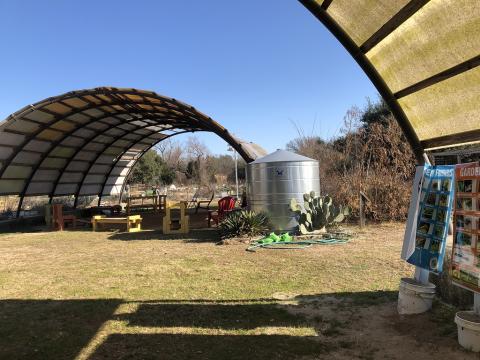
However, within our estimates of green occupational growth, there is evidence of promising career pathways to quality, well-paying jobs in the green economy for residents that have historically had poor access. A segment of these jobs are in professional occupations requiring higher educational attainment (but less than a four-year degree). Here, the pathway for lower income students is through accumulation of skills and certified post-secondary degrees. For example, individuals can access certain professional service occupations such as environmental engineering technicians via two-year community college tracks, and continue, if desired, toward environmental engineering careers through a four-year college program.
A second important channel into green employment is through the skilled trades. According to our Travis County estimates, there will also be an estimated 4,748 annual job openings in occupations not requiring high average formal education levels. Many of these are low-wage occupations, but over half of job openings in this category have average wages of over twenty dollars per hour (in 2019 real wages). These occupational categories were the focus of our analysis, and many occupations in this category—such as plumbers and pipefitters, electricians, building inspectors, and HVAC technicians—offered wages of over twenty-five dollars per hour and prospects for upward mobility.
The next question in our inquiry was if local workforce and economic development institutions were positioned to facilitate access to these growing green occupations. To better understand the role of local public and nonprofit institutions, twenty-five regional workforce and economic development organizations were interviewed. Background research and interview information revealed that the local political atmosphere has acted as a strong tide pushing against access to quality green jobs. Austin workforce development operates in a right-to-work context with low unionization and deregulated labor markets. In light of weak labor institutions, private sector hostility to labor and workplace regulation is backed by state government policies and a long history of racial and ethnic discrimination. Against these forces, a select number of community and labor organizations and local government agencies have worked to address job access gaps by promoting workforce development as a key path linking green jobs programs with broader equity planning efforts. One fruit of these efforts was the Austin Climate Equity Plan published by the City in late 2021. The plan argues that the creation of green jobs will not only drive improved environmental and economic outcomes, but also address specific equity goals. The plan encourages increasing green job training opportunities for people of color and providing financial support to local green businesses owned by people of color.
Austin Workforce Development Institutions in the Just Transition Framework
As in all metro regions, the federal government funds Austin’s local workforce development board, the Workforce Solutions-Capital Area. The Austin board advances local workforce development goals by funding job placement providers and local training institutions; it also operates as an intermediary that brings together labor, private employers, education, government, and nonprofits. Workforce Solutions-Capital Area spearheaded the adoption of the regional 2017 Community Workforce Plan and its stated objective of ensuring ten thousand residents at or below 200% of the poverty level secure middle-skill jobs by 2021. The Austin Community College system is another linchpin institution in advancing this goal by offering education and training that leads to associates degrees or industry certifications.
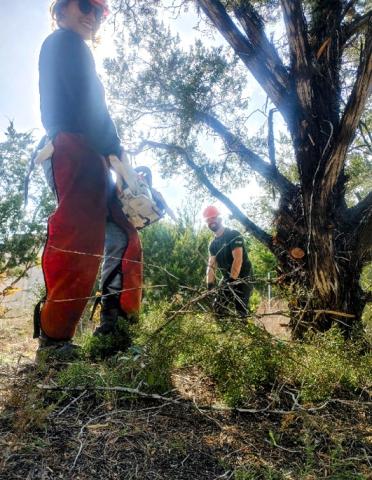
The Community Workforce Plan and, consequently, local workforce development efforts do not have a strong green jobs orientation. Four of the eight workforce development organizations interviewed did not offer any training for the occupations with green activities identified above. Local workforce development efforts are largely focused on healthcare, information technology, and skilled trades industry partnerships.
Austin Community College was the most significant institution providing training for the green jobs that are projected to experience high growth in the Austin area and not associated with high levels of educational attainment—plumbers and pipefitters; automotive service technicians and mechanics; inspectors; and heavy truck drivers.
The majority of workforce training organizations interviewed offered training that was typically intermediate in length and did not have clear post-program pathways into the skilled trades. The “high-road” programs focusing on quality jobs with green occupational tasks were the exception. Austin Community College and the International Brotherhood of Electrical Workers offer certificate, pre-apprenticeship, and apprenticeship opportunities in the skilled trades, including electricians and HVAC technicians—middle-wage green occupations in high-growth sectors. This example suggests some possibility to conceptualize and implement approaches that enable participants starting with a GED-level of education to advance into quality career-building jobs.
Beyond their meager focus on career pathway strategies of workforce development, most Austin training organizations did not explicitly focus on the diversity of participants. The majority of organizations indicated that they recruit strictly based on income and acknowledged racial equity as a challenge. Explicitly attending to racial and ethnic inequalities in programming is needed given disparities in post-program hiring and wages. A year after their participation in training, Black and Latinx men and women were more likely to earn less than their white counterparts. The biggest disparities in earnings existed in the skilled trades, where white men earned an average of $9,320 more than Black participants per year.
It is crucial to address the gap between local green economic and workforce development initiatives and the training of a diverse workforce in order to make meaningful progress toward building equitable green career pathways. Most private and NGO sector respondents conveyed that they were unaware of the City’s recent climate action goals, let alone its Climate Equity Plan’s expressed commitment to fostering equitable green job growth. Workforce development organizations emphasized the need for structured partnerships between government, nonprofit organizations, businesses, and specific communities in order to act on green job development. Our research in this area indicates that more decisive, innovative action is needed to cultivate the systemic changes required to advance just transition goals in Austin’s deregulated, low-union environment.
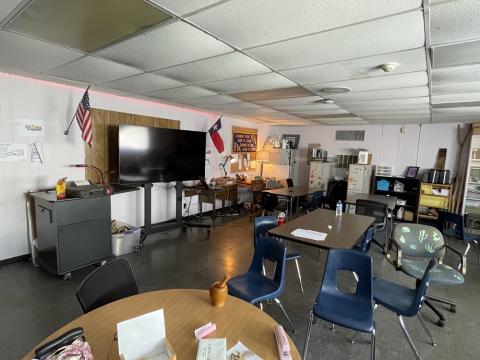
Building a Just Transition to Green Cities
Focusing on the role of work in placemaking in the context of the environmental crisis and growing inequality, our research attempts to unpack the character of green job growth and opportunities to connect residents with historically poor access to career-building employment.
Despite Austin’s image as a progressive city at the forefront of innovative and effective actions across a spectrum of environmental areas, City and economic development leaders have not meaningfully focused on labor workforce development in the context of advancing sustainability and climate justice. There is no doubt local authorities and leaders are constrained by the political environment—particularly the weak labor market regulation and protections. However, our research profiled a few clear and feasible actions that could be considered to make progress toward just transition goals.
First, the City could further build stronger links between specific communities and green activities and jobs by expanding the city’s new Climate Ambassadors initiative. These initiatives could create a permanent network of residents who, as paid workers, would increase awareness of and participation in a variety of environmental actions at the community level. As a second possible initiative, the City of Austin could collaborate more directly with the local workforce development board, area employers, and labor unions to expand paid apprenticeship programs in occupations with significant green job tasks.
All photographs by Austin Civilian Conservation Corps (ACCC) members who participated in this research project. Additional photos and ACCC members’ insights are available in Oden et al. (2022) and Solis et al. (2023).
This article originally appeared in the 2023-2024 edition of Platform, "Civics and Placemaking." To view the original version, including end notes, visit: https://soa.utexas.edu/publications/platform/platform-civics-and-placem…

